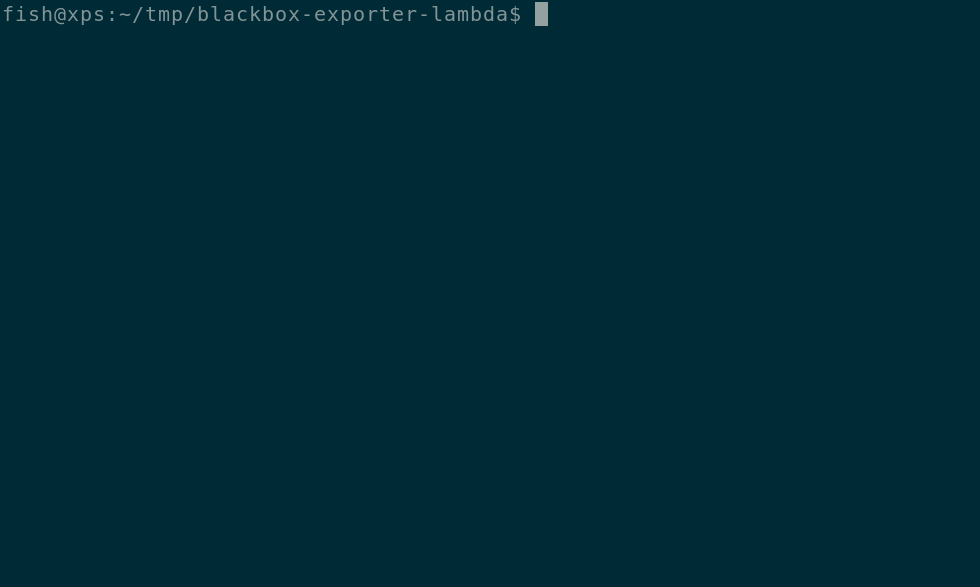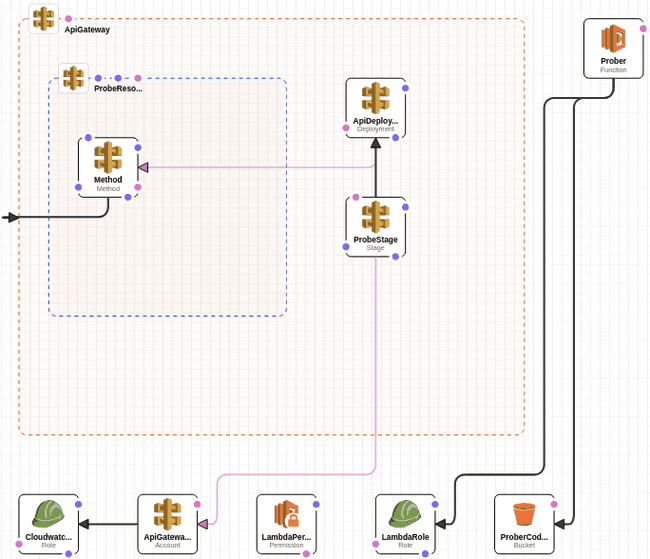5π Consulting
Run Prometheus Blackbox Exporter as Lambda
December 10, 2018
Introduction
When providing any service to a global customer base, you are probably interested in measuring the performance and availability of your site from multiple global locations.
For this, I’ve created latency.at which unfortunately didn’t get the traction I hoped it would. (See this for more details).
So today, we’re back where we were before: If you want your performance and availability metrics in Prometheus your best option is to run a bunch of snowflake VMs with the prometheus blackbox exporter in different regions and glue some authenticating reverse proxy to it.
Wouldn’t it be nice if we could run this without having to mange servers? Like serverless?
Introducing blackbox-exporter-lambda!
How does it work?
When working on latency.at, I’ve refactored the blackbox-exporter to make it possible to use it’s probers and config as packages in downstream project.
This allowed me to create a new project which runs the probers on AWS Lambda.
The project contains Cloudformation templates to create the Lambda and expose it via the Amazon API Gateway.
For authorization, we require an authorization header to match the AUTH_TOKEN
environment variable.
Deployment
Bootstrapping
 Download or checkout the
blackbox-exporter-lambda and change to the directory:
Download or checkout the
blackbox-exporter-lambda and change to the directory:
git clone https://github.com/discordianfish/blackbox-exporter-lambda.git
cd blackbox-exporter-lambdaCreate the Cloudformation Stack. On the first run, this will create a S3 bucket
called blackbox-exporter-[AWS AccountId]. You might want to use a different
prefix for reach region you deploy this to.
This won’t include the lambda since we first need to upload the code.
make newUpload Code
 Now upload the code. This uses the aws cli to get your Account ID. You can also
set this using the
Now upload the code. This uses the aws cli to get your Account ID. You can also
set this using the ACCOUNT_ID environment variable.
make uploadTo finialize this and create the lambda run:
AUTH_TOKEN=foobar23 make updateAUTH_TOKEN specifies which auth token to require when handling requests. You
can make Prometheus use this token by configuring bearer_token in the scrape
config
Test Lambda
 Now we can run
Now we can run make endpoint to get the URL to invoke the blackbox-exporter
and use curl for testing this. You use the config parameter for
blackbox-exporter configuration. Each probe takes different configuration
parameters. See the blackbox-exporter configuration
documentation
for more details.
curl -L -G \
-H 'Authorization: Bearer foobar23' \
--data-urlencode 'target=https://www.google.com' \
--data-urlencode 'config={"preferred_ip_protocol": "ip4"}' \
$(make endpoint)/httpUpdates
To change the AUTH_TOKEN or roll out any other Cloudformation change, you can
run AUTH_TOKEN=xx make update again.
When changing the lambda code itself, run make upload to upload it to the code
bucket and run make bump to notify Lambda that the code base changed.
Prometheus Configuration
The configuration is similar to the one used for the regular blackbox-exporter. It also uses relabling to configure multiple targets easily:
- job_name: 'blackbox-exporter-lambda-us-central-1'
metrics_path: /probe/http
bearer_token: foobar23
scheme: https
params:
config:
- |
preferred_ip_protocol: ip4
static_configs:
- targets:
- https://5pi.de
- https://www.google.com
relabel_configs:
- target_label: __param_target
source_labels: [__address__]
- target_label: instance
source_labels: [__param_target]
- target_label: __address__
replacement: 5v5jaus0zj.execute-api.eu-central-1.amazonaws.comUse your token for bearer_token and the output of make endpoint for the __address__
replacement and metrics_path. This should get you something like this:
probe_http_duration_seconds{instance="https://5pi.de",job="blackbox-exporter-lambda-us-central-1"}


